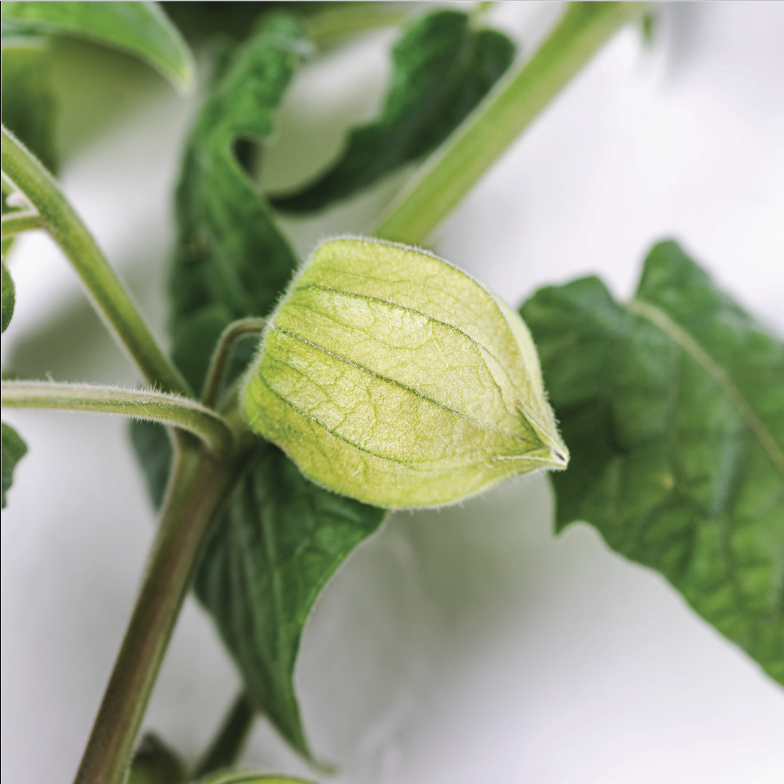Cape Gooseberry
Latin name: Physalis peruviana
🌱 Days to Sprout: 10-28
😋 Ready for Full Dose of plant food with true leaves or roots .5-inch long
✂️ Thin to: 1 plant per yCube
🍅 Days to Maturity: 80+
💡 Light Zone: High
📏 Plant Size: 2 ft
💚 Care Level: Advanced
Origin
Cape Gooseberry is a variety of ground cherry native to the Andean region. It belongs to the Solanaceae plant family, also known as the Nightshades, which includes tomatoes and eggplants. In the early 1800s, Cape Gooseberry was widely grown in South Africa, where it is thought to have received its common name.
Qualities
Cape Gooseberries grow branches with heart-shaped leaves and lovely, bell-shaped flowers. The golden berry can often be slightly sticky to the touch inside the papery husk, and has a similar texture to a firm tomato. The fruits’ flavor is a unique, tomato-pineapple-like blend.
Note that unripened green fruit, as well as leaves, are poisonous to humans, cats, and dogs.
Cape Gooseberries are especially rich in immune-supporting vitamin C, B-complex vitamins, and potassium. The fruits’ golden-orange color comes from carotenoids β-carotene and β-cryptoxanthin, which serve as potent antioxidants and valuable sources of provitamin A.
Use
Remove the husk to enjoy the ripe Cape Gooseberry fruit similarly to tomatoes. Try the berries raw or cooked in salads, desserts, jams, and jellies. They can also be dried and eaten much like figs, apricots, or grapes.
Care & Harvest
💡Temperature: Prefers warmer temperatures (70-85°F).
🐝 Pollination: Cape Gooseberries require pollination. When flowers appear, hand-pollinate them by gently shaking the entire plant to replicate the effects of wind, or gently disturb the inside of blossoms with your finger or a small brush.
🫶 Support: We suggest using our Plant Belt to support the plant and its heavy fruit as it matures.
✂️ Pruning: Cape Gooseberries require pruning. Snip away yellow or brown leaves if they appear, and trim branches to ensure the plant stays within the Gardyn’s light. Check the roots monthly and trim any that are brown or extending past the yPod.
🔎 Plant Health: Thrips are a common pest, but you can use our prevention tricks to keep them at bay!
🍅 Harvest: Cape Gooseberry fruit form inside a papery husk. Ripe fruit are entirely yellow-orange in color, which typically coincides with the husk drying and losing its color. You can wait for the ripe fruit to fall, or you can lightly shake the branches to make them fall. Check whether the fruit is entirely yellow before eating. Allow any green or unripe fruit to continue to ripen in a windowsill, even if they fall prematurely. Unripe fruits are poisonous - DO NOT EAT green fruit.
Our Plant Health & Nutrition Team thoroughly tests each variety we offer to bring you the most flavorful and high-quality plants. We regularly rotate our plant portfolio, so please note, availability varies.

